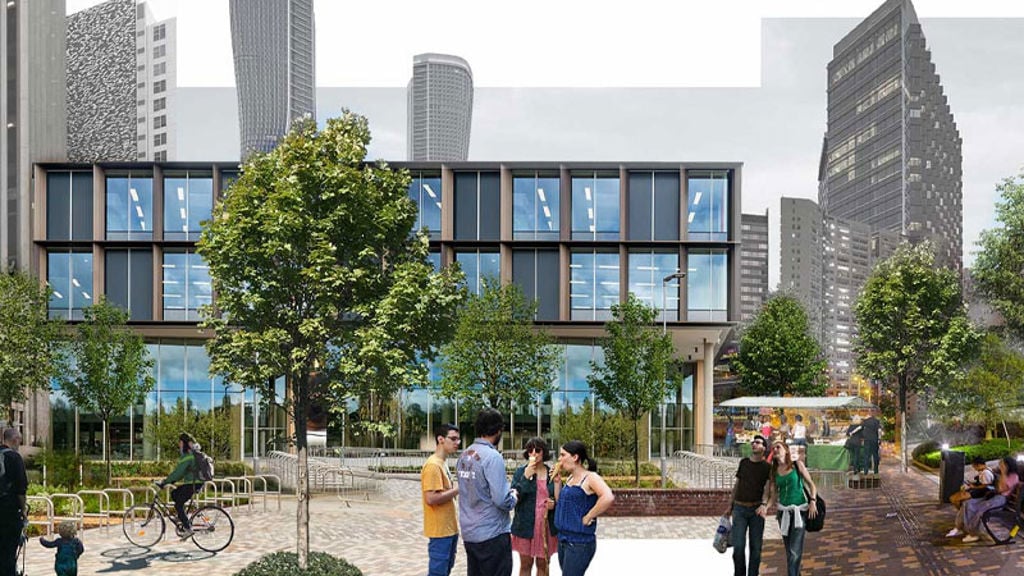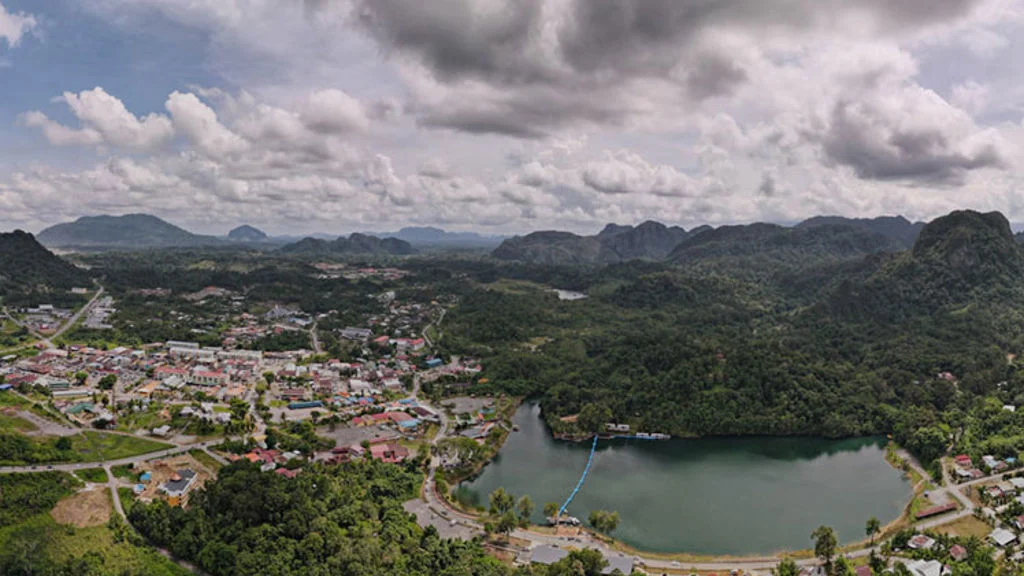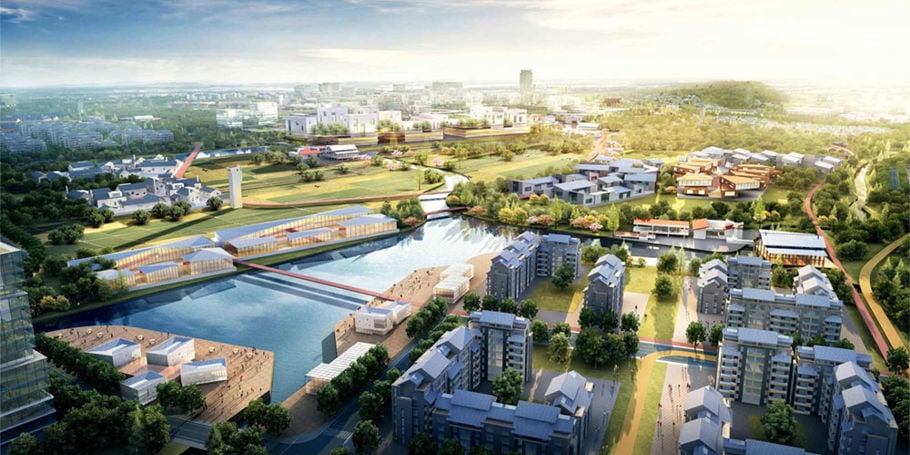Creating a vibrant place for future communities through climate responsive design
Mahindra World City Jaipur

What we delivered
-
A masterplan made up of ten distinct but integrated districts, including 25,000 new sustainable homes in mixed-use walkable neighbourhoods
-
9km of landscape frontage, combining a central river park with open spaces and green corridors
-
A range of sustainability interventions including reuse of treated water and passive design for energy efficiency
Get in touch with our team
Located in Rajasthan, Mahindra World City Jaipur (MWCJ) is the second integrated business city of Mahindra in India. Conceived to become one of the largest climate resilient developments in the world, its aim was to build a sustainable place to live and work. To realise this ambition, its residential and social infrastructure area had to be carefully designed, creating a lively place for communities with the planet at its heart.
Appointed to develop the masterplan, we shaped a district integrated by ten distinct yet interlinked communities, each within a short walking distance of a local hub with convenience retail and facilities. Our design also included a town centre and a central park, providing locals and tourists with high-quality and memorable landscapes to enjoy. An inclusive and enjoyable place to both live and work, the city accommodates an employment-focused special economic zone while promoting active travel through walking and cycling paths.
Integrated by twenty-five thousand new sustainable homes in mixed-use walkable neighbourhoods, MWCJ has created a vibrant community for residents and workers while attracting visitors from the wider area and from Jaipur. In recognition of its commitment to achieve net-negative carbon emissions, the project became the first development in Asia to receive Stage 2 certification from the C40 Cities Climate Leadership Group. Finding the balance between nature and people, the city has become a model for city development across emerging communities.
Planning for future communities
With an extension of 180-ha, the new residential and social district within MWCJ had to be tailored to the needs of its future community. Our masterplan created ten self-sufficient neighbourhoods with their own local hub to ensure residents were within easy walking distance of convenience stores and public facilities. Featuring retail, cultural, health and wellbeing spaces, as well as food outlets, the design included a “town centre” to bring all communities and visitors together. To complement these, we added additional hospitality, commercial and retail spaces in the north-west and higher education facilities in the centre and south-west of the site.
As green and blue spaces play a key role in the health and wellbeing of people, incorporating areas to be in touch with nature and water was a key consideration. Together with open spaces and green corridors across the city, the central Nevata Park gives access to nine kilometres of high-quality and memorable landscapes. To enable residents and visitors to enjoy the outdoors on hotter days, our design featured four kilometres of shaded walkable streets for pedestrians. The combination of these strategies created an attractive, accessible and climate resilient city.



Developing a climate responsive city
Conceived to balance the natural and human needs, our design concept ‘Communities in Landscape’ was based on three core principles. The first one was to ensure residents and visitors were less than a five-minute walk from high-quality open spaces, providing places to connect with nature. The second was to give each neighbourhood access to a plaza with local stores and amenities, creating a “heart” to meet and relax in a more urban setting. The third one was to plan routes for walking and cycling, promoting active and sustainable travel between communities and with surrounding villages and settlements.
In considering the local climate’s frequent high temperatures, designing indoor and outdoor spaces for thermal comfort was crucial. To encourage the use of open spaces, as well as improve building performance, we used solar assessment tools to determine the optimal orientation for plots and streets. Through our microclimate and route network analysis, we identified areas with direct exposure to solar radiation and developed a shading strategy to improve outdoor comfort levels. Some examples of these included narrower street profiles, shading structures, and tree planting.
In addition, we also embedded a range of sustainability interventions such as reuse of treated water for landscaping, passive design for energy efficient buildings, and proposals to use low emission buses for last-mile connectivity.
Creating a multifunctional landscape
The new district was bisected by a monsoonal storm water corridor which was unsuitable for development. Our proposal turned this area into the primary open space in the city, the blue green Nevata Park, from which pedestrianised green corridors connect to new communities and the wider area.
Water management within the park was designed to contain storm water, increasing flood resilience during the monsoon season while creating an accessible riverfront park for the community. In the dry season, small ponds, wetlands and canals create pockets of shaded and cool gathering areas, giving the space its own identity and character.


Leonard Design Architects
Projects
Explore more masterplanning projects

Developing a Master Plan for regional regeneration in Victoria
Victorian Goldfields World Heritage Master Plan, Australia

Connecting sustainable communities: the future of Toton and Chetwynd Barracks
Toton and Chetwynd Barracks, United Kingdom

A vision for sustainable growth and innovation in Sydney
Macquarie Park Innovation District, Australia

Supporting Bau’s economic growth through urban transformation
Bau Masterplan Study 2030, Malaysia
Get in touch with us
If you'd like to speak to one of our masterplanning experts about any of the issues raised on this page or a potential collaboration then please get in touch by completing the form.

